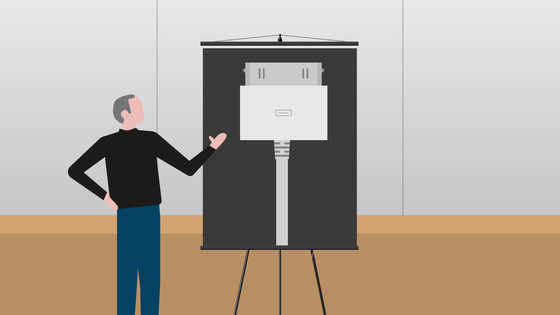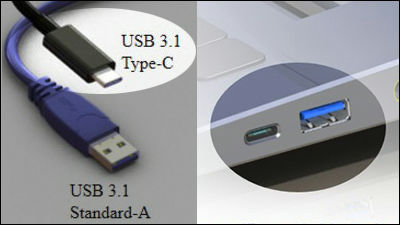Why are Apple's Lightning cables fragile?

Apple's iPhone uses a proprietary Lightning connector for charging and sending and receiving data. The Lightning connector has 8 pins on one side, but unlike USB Type-A, it has the advantage that it can be plugged in regardless of the front or back, but it is also known that the cable is easily damaged.
Why iPhone Cables Break So Easily --YouTube
The Lightning connector, which was announced as the successor standard to the Dock connector in September 2012, has a data transfer speed of 480 Mbps, which is the same as USB 2.0, and is characterized by being able to be plugged in without worrying about the front and back. However, the major drawback is that the base of the Lightning cable terminal is easily damaged.

As shown in the image below, the shield of the cable will be peeled off and the copper wire inside will be exposed, so if you continue to use it as it is, the cable itself is likely to break.

The problem of this cable being easily damaged was confirmed not only with the Lightning cable, but also with the previous generation standard Dock cable and the old MagSafe cable for MacBook. It is said that this problem began to be reported around 2006.

Apple Explained explains why the roots of cable connectors are fragile, 'because Apple prioritized design over functionality.'

Since the cable is plugged in and out, it is especially easy to load the base of the connector. Therefore, the following cable protectors were initially attached to the base of the Dock cable connector.

However, Apple, who disliked this design, changed the root of the connector to a simple design, knowing that the cable breakage rate would increase.

And all the cables used for iPod, iPhone, and MacBook have been unified into a design without a cable protector.

Furthermore, Steve Jobs is a statement about the commitment to environmental issues in the 2007

According to Apple Explained, the elimination of

As a result of Apple's use of rubber instead of PVC as the material for the cable shield, the softness of the cable has improved and the handling has improved, but it has become easy to break at the base of the connector, which is easily loaded.

Genuine Apple cables are sold at a higher price than regular cables. The fact that the cable is easily damaged also means that the cost performance of Apple terminals is poor, so there was a flood of complaints.

At the time of writing, Apple also adopted the Lightning connector on the latest iPhone 13/13 Pro, which does not solve the problem of cable breakage. However, the

In addition, the iMac comes with a USB-C to Lightning cable, which is the first cable to connect peripheral devices and uses a woven material. The cable wasn't sold separately at the time of writing, but Apple Explained said he hopes it will be available for purchase in the future.

Related Posts:







